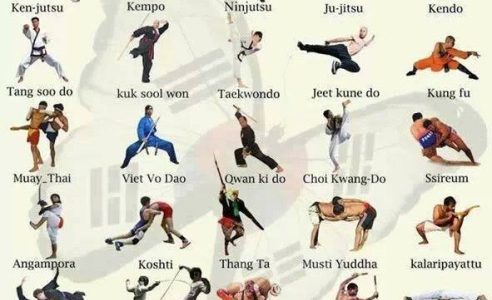Standard Martial Arts Vs. Modern Battle Sports: Understanding The Trick Differences
Standard Martial Arts Vs. Modern Battle Sports: Understanding The Trick Differences
Blog Article
Staff Author-Bright Johnson
When you consider martial arts, do you lean much more towards the conventional methods or the modern-day battle sporting activities? Each path uses special benefits and experiences, shaped by their viewpoints and training approaches. Traditional martial arts stress individual growth and discipline, while modern combat sports focus on competitors and efficiency. Comprehending these distinctions can direct you in selecting the best technique for your journey. Yet how do these distinctions materialize in training and ideology?
The Ideology and Background Behind Conventional Martial arts
While many individuals connect martial arts with physical battle, the viewpoint and history behind standard martial arts run much deeper. You'll locate that these techniques stress individual development, technique, and regard.
Stemming from https://champion-martial-arts-for45543.vblogetin.com/40135752/enhancing-your-physical-and-mental-health-via-conventional-martial-arts , typical martial arts were frequently established for Self-Defense and spiritual development. They symbolize principles such as balance, harmony, and self-constraint, leading practitioners past mere battling abilities.
As you educate, you'll not just discover strategies but additionally acquire insights into the society and worths that shaped these arts. The routines and customs, typically given through generations, promote a sense of community and belonging.
The Affordable Nature of Modern Combat Sports
Modern combat sporting activities have actually changed the landscape of martial arts right into a very competitive field, where professional athletes challenge in a test of skill, method, and endurance.
You'll see that competitions are often arranged with strict regulations and regulations, ensuring fair play and security. These events bring in big target markets, sustaining the exhilaration and intensity of competitions.
please click the next document train carefully, not just for physical prowess yet also for psychological strength, recognizing that every detail counts in the ring. The adrenaline thrill throughout competitions is apparent, as boxers press their limitations to assert triumph.
Fans appreciate the athleticism and artistry included, making modern combat sporting activities a thrilling phenomenon that remains to evolve and captivate lovers around the globe.
Training Techniques and Methods: A Comparative Analysis
The affordable atmosphere of modern-day fight sports demands cutting-edge training techniques that vary considerably from conventional martial arts.
In modern training, you'll focus on certain strategies, competing, and conditioning, typically making use of drills that simulate actual battle situations. You'll see a focus on quantifiable efficiency and regular competitors to assess your skills.
On the other hand, standard martial arts prioritize types, katas, and philosophical teachings, typically highlighting discipline and respect over competitors.
Training is generally much less intense and might entail repeated method instead of real-time sparring.
While both approaches build skill and fitness, modern combat sports give a much more vibrant and adaptable training atmosphere, preparing you for instant difficulties in the ring or cage.
Pick the path that aligns with your goals and passions.
Final thought
In choosing in between traditional martial arts and contemporary battle sports, it truly comes down to what you value a lot of. If https://www.wbbjtv.com/2023/07/16/lexington-martial-arts-school-welcomes-a-special-guest/ looking for personal growth, discipline, and a sense of community, typical arts may be your best fit. Yet if you flourish on competitors and real-time difficulties, contemporary battle sporting activities could be the way to go. Eventually, both paths offer unique benefits, so it's everything about aligning your training with your personal objectives and interests.
